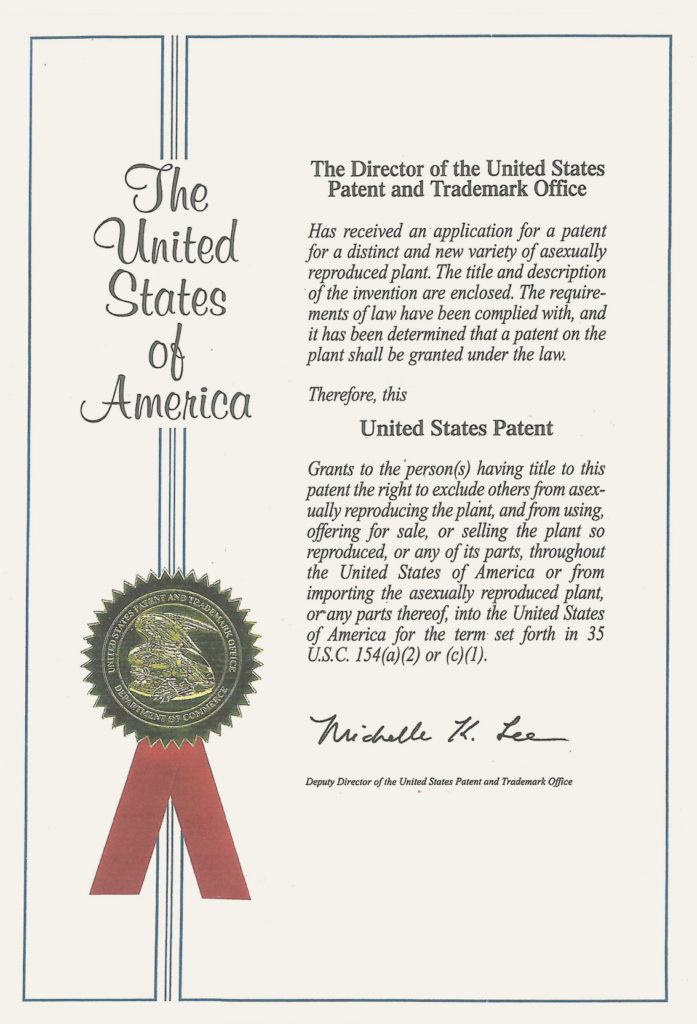Nursery
Connie Marks Daylily
The email form now works! If you sent an email before February 4, 2022, then it was not received.
‘Connie Marks’ daylily was discovered in the cultivated area when it first bloomed during the summer of 2001 at a commercial nursery/garden center located in Culpepper, Virginia. The plant ‘Connie Marks’ was an asexual offspring of an American Hemerocallis society registered daylily named ‘Hyperion’ which was registered in 1925.
Asexual offspring refers to the fact that ‘Hyperion’ was the only other daylily growing in the nursery garden vicinity where ‘Connie Marks’ was discovered. The large ‘Hyperion’ clump had a smaller six fan, double yellow flowered ‘Connie Marks’ clump growing on its perimeter. ‘Hyperion’’s flowers are single. The plants has been successfully propagated by division methods at the same nursery to produce identical plants that maintain the unique characteristics of the original. Since 2001 the original six fan ‘Connie Marks’ has been repeatedly divided to produce numerous pants that are phenotypically identical.
Press
Published on www.fredericksburg.com
BY DONNIE JOHNSTON/THE FREE LANCE-STAR
Jul 3, 2015
Randy Marks, who has been a nurseryman in Culpeper for 40-plus years, finally has a patent for a new variety of daylily that he has been breeding.
“It only took 15 years,” Marks says. “And it took a lot of work.”
The new variety is called Connie Marks, named after his wife (the daughter of the late syndicated columnist Art Buchwald), and it is now beginning its annual bloom.
A new variety of daylily, or hemorocallis, is not all that unusual. It is how this variety came to be that is the story.
It all began about 15 years ago when Marks and his half brother, George Apperson, were working one day in his Garden Design nursery. His trained eye spotted a daylily with a double flower.
“It caught my eye right off,” he recalls. “This was something I had never seen before.”
Marks said the discovery caught him a bit off guard.
“It is not uncommon for daylilies to have a double petal, but all of the ones I had were single flowers,” said Marks. “Almost all new varieties are from hybrid crosses, but this was a mutation.”
Marks quickly isolated the plant and began the long and tedious process of regenerating the mutated variety. After years of work, he finally began the equally arduous task of getting a patent for the new variety.
The first thing he had to prove was that Connie Marks was indeed a mutation and not the result of wind-borne pollen that would result in a cross.
Marks then had to document the features that set this new variety apart from other daylilies.
Aside from the double petals, perhaps the single most unique characteristic of this plant was the fact that it bloomed for an extended period of time. According to the patent information, Connie Marks begins blooming in early to mid-June and continues until the end of July or later.
This, according to the patent, “is longer than the 30-day average bloom period for 99 percent of the cultivars in the trade.”
Like most other daylilies, this variety is nocturnal and the light yellow blooms are smaller than other conventional flowers of its kind.
Carefully crossing plants over time is one thing, but suddenly finding a new variety hiding in your flower bed is something else entirely. That fact prompted Marks to pursue his patent for 15 years.
Marks’ business suffered heavily from the economic downturn in 2008. But with patent in hand, he is now ready to market his new variety.
“I’ve sold a few, but I really haven’t pushed it,” he said. “Now I’m ready to push it.”
With about 70,000 named varieties on the market, Marks knows that this is no easy task. Still, he feels that his Connie Marks variety is unusual enough to break into the market with a bang.
“I know that with crosses, only about one in two or 3,000 new varieties are marketable,” he said.
“But this?” he added. “This is one in a million!”

